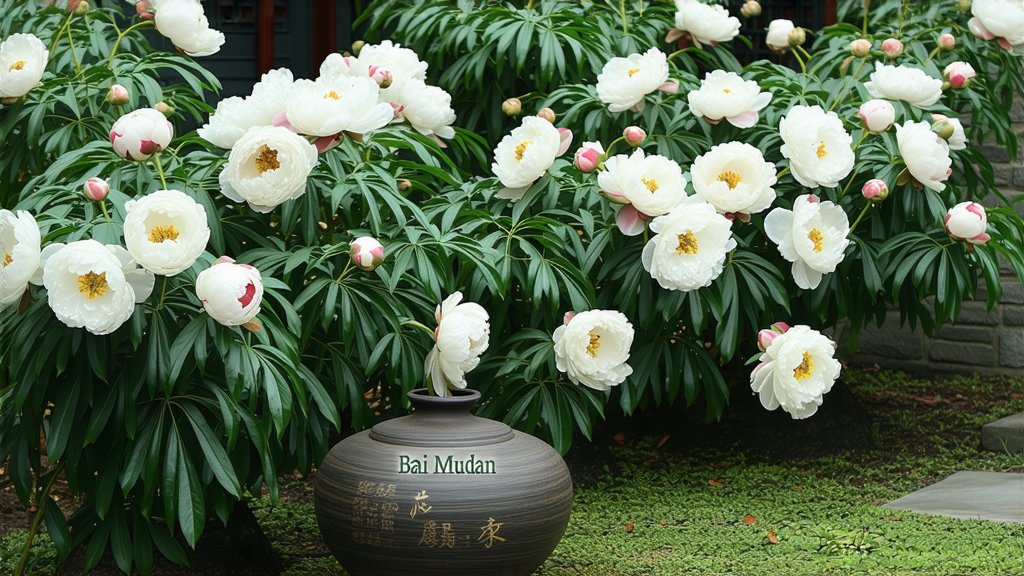
White Peony Tea, also known as Bai Mudan in Mandarin, stands as one of the most revered and delicate teas within China's rich tapestry of tea culture. This exquisite tea hails from the Fujian Province, a region renowned for its favorable climate and high-altitude terrain, which contribute significantly to the unique character of Bai Mudan. As we embark on this exploration, we delve into the historical roots, varieties, meticulous crafting process, and the art of appreciating this enigmatic tea.
Historical Background
The origins of White Peony Tea can be traced back to the Tang Dynasty (618-907 AD), a period marked by flourishing arts, literature, and, notably, tea culture. Bai Mudan, meaning "White Peony," was so named due to the resemblance of its downy buds and leaves to the petals of a peony flower when viewed under a microscope. Its cultivation became prominent during the Qing Dynasty (1644-1912), particularly in Fuding County, where it gained immense popularity among the imperial court and elite circles.
Varieties of Bai Mudan
Bai Mudan is primarily composed of two distinct types: Xiaoye (小叶白茶) and Daiye (大叶白茶). Xiaoye refers to those made from smaller leaf varieties, offering a more refined flavor profile, while Daiye comes from larger leaves, imparting a bolder taste. The Heibei variety, specifically grown in the northern part of Fujian, is highly sought after for its exceptional quality and distinctive aroma.
Crafting the Elixir: The Making of Bai Mudan
The artisanship behind Bai Mudan tea is a testament to centuries-old traditions that emphasize minimal intervention to preserve the tea's natural essence. Here's an overview of its intricate production process:
-
Plucking: Only the youngest shoots and buds are handpicked during early spring, typically between March and April. These consist of one bud accompanied by two young leaves.
-
Withering: The freshly harvested leaves undergo a natural withering process either by being spread out thinly on bamboo mats or using specialized withering trays. This step allows moisture to evaporate slowly, enhancing the tea's fragrance and sweetness.
-
Fixation: Unlike other teas, Bai Mudan is not subjected to rolling but rather gently fixed by lightly baking in woks or baskets over low heat. This preserves the integrity of the leaves and maintains their silvery-white appearance.
-
Drying: The partially dried leaves are then fully dried under controlled temperature conditions to reduce moisture content further, ensuring longevity without compromising flavor.
-
Sorting & Packaging: Finally, the dried tea is meticulously sorted to remove any imperfections before being packaged in airtight containers to preserve freshness.
The Art of Tasting Bai Mudan
Appreciating Bai Mudan goes beyond mere consumption; it is an experience that engages all senses. Here’s how to savor this delicate brew:
-
Preparation: Use water at a temperature around 80-85°C (175-185°F) to avoid scalding the tender leaves. A glass teapot or a clear Gaiwan (a traditional Chinese tea cup with lid) is ideal for observing the unfurling leaves.
-
Infusion: Add approximately 5 grams of Bai Mudan per 200ml of hot water. Allow the first infusion to steep for about 1-2 minutes, gradually increasing steeping time for subsequent infusions. Bai Mudan can be enjoyed multiple times, each revealing new layers of flavor.
-
Observation: Admire the pale golden-green liquor, reminiscent of its name, and the graceful dance of the leaves as they slowly unfurl.
-
Aroma & Flavor: Inhale the subtle floral notes followed by hints of fruitiness and a whisper of honey. On the palate, expect a smooth, mellow taste with a lingering sweetness and a slight vegetal undertone.
-
Texture: Notice the silky mouthfeel and the tea's ability to coat the throat gently, leaving a refreshing aftertaste.
In conclusion, Bai Mudan tea embodies the elegance and sophistication inherent in Chinese tea culture. From its storied past to the meticulous craftsmanship involved in its creation, every aspect of this tea speaks volumes about the artistry and reverence for nature that define China's tea heritage. For enthusiasts seeking a journey into the depths of tea appreciation, White Peony offers an unparalleled experience that transcends time and borders.
[End of text]